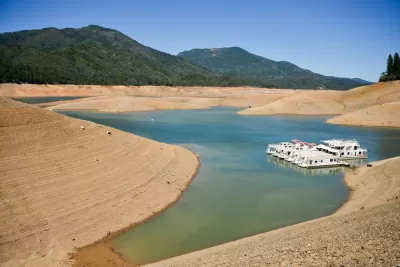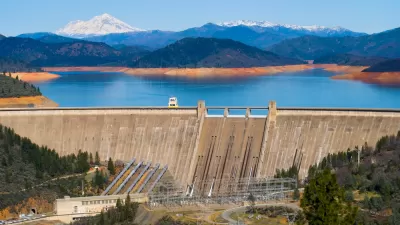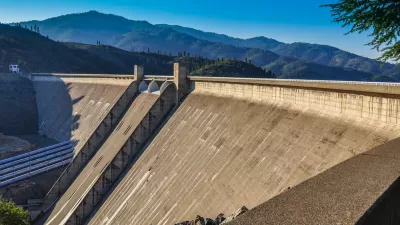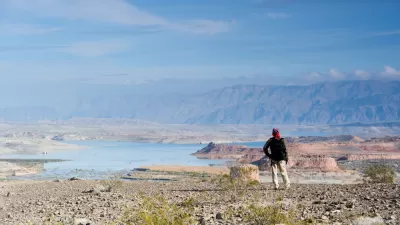Raising the height of the Shasta Dam in Northern California has been on the table since the 1980s. Now it looks like the Department of the Interior's Bureau of Reclamation is going through with it.

Maven's Notebook shares news from the U.S. Bureau of Reclamation about progress on a controversial project that would raise the dam at California's largest reservoir by 18.5 feet.
According to the Bureau of Reclamation announcement, "geologists are extracting core samples from on, around and deep within Shasta Dam. Gathered data will be used to characterize concrete and geology conditions related to a proposed 18 ½ feet Shasta Dam raise."
Raising the dam will allow an additional 630,000 acre-feet of storage in the reservoir. The Bureau of Reclamation is touting the project for its benefit to agricultural, commercial, and environmental interests, but the politics of the project aren't neat and clean, as detailed in a post by Katharine Jose from March 2018. For more on the Shasta Dam and Reservoir Enlargement Project, see a Bureau of Reclamation website set up for the project.
Congress approved $20 million in funding for the project in March, through the Water Infrastructure Improvements for the Nation (WIIN) Act.
Meanwhile, the state has also been pouring money into water storage projects, with $2.7 billion in Proposition 1 awarded to projects in July 2018.
FULL STORY: Exploratory work begins at Shasta Dam; Delta Islands and Levees study releases final EIS for review...

Study: Maui’s Plan to Convert Vacation Rentals to Long-Term Housing Could Cause Nearly $1 Billion Economic Loss
The plan would reduce visitor accommodation by 25,% resulting in 1,900 jobs lost.

North Texas Transit Leaders Tout Benefits of TOD for Growing Region
At a summit focused on transit-oriented development, policymakers discussed how North Texas’ expanded light rail system can serve as a tool for economic growth.

Why Should We Subsidize Public Transportation?
Many public transit agencies face financial stress due to rising costs, declining fare revenue, and declining subsidies. Transit advocates must provide a strong business case for increasing public transit funding.

How to Make US Trains Faster
Changes to boarding platforms and a switch to electric trains could improve U.S. passenger rail service without the added cost of high-speed rail.

Columbia’s Revitalized ‘Loop’ Is a Hub for Local Entrepreneurs
A focus on small businesses is helping a commercial corridor in Columbia, Missouri thrive.

Invasive Insect Threatens Minnesota’s Ash Forests
The Emerald Ash Borer is a rapidly spreading invasive pest threatening Minnesota’s ash trees, and homeowners are encouraged to plant diverse replacement species, avoid moving ash firewood, and monitor for signs of infestation.
Urban Design for Planners 1: Software Tools
This six-course series explores essential urban design concepts using open source software and equips planners with the tools they need to participate fully in the urban design process.
Planning for Universal Design
Learn the tools for implementing Universal Design in planning regulations.
City of Santa Clarita
Ascent Environmental
Institute for Housing and Urban Development Studies (IHS)
City of Grandview
Harvard GSD Executive Education
Toledo-Lucas County Plan Commissions
Salt Lake City
NYU Wagner Graduate School of Public Service





























